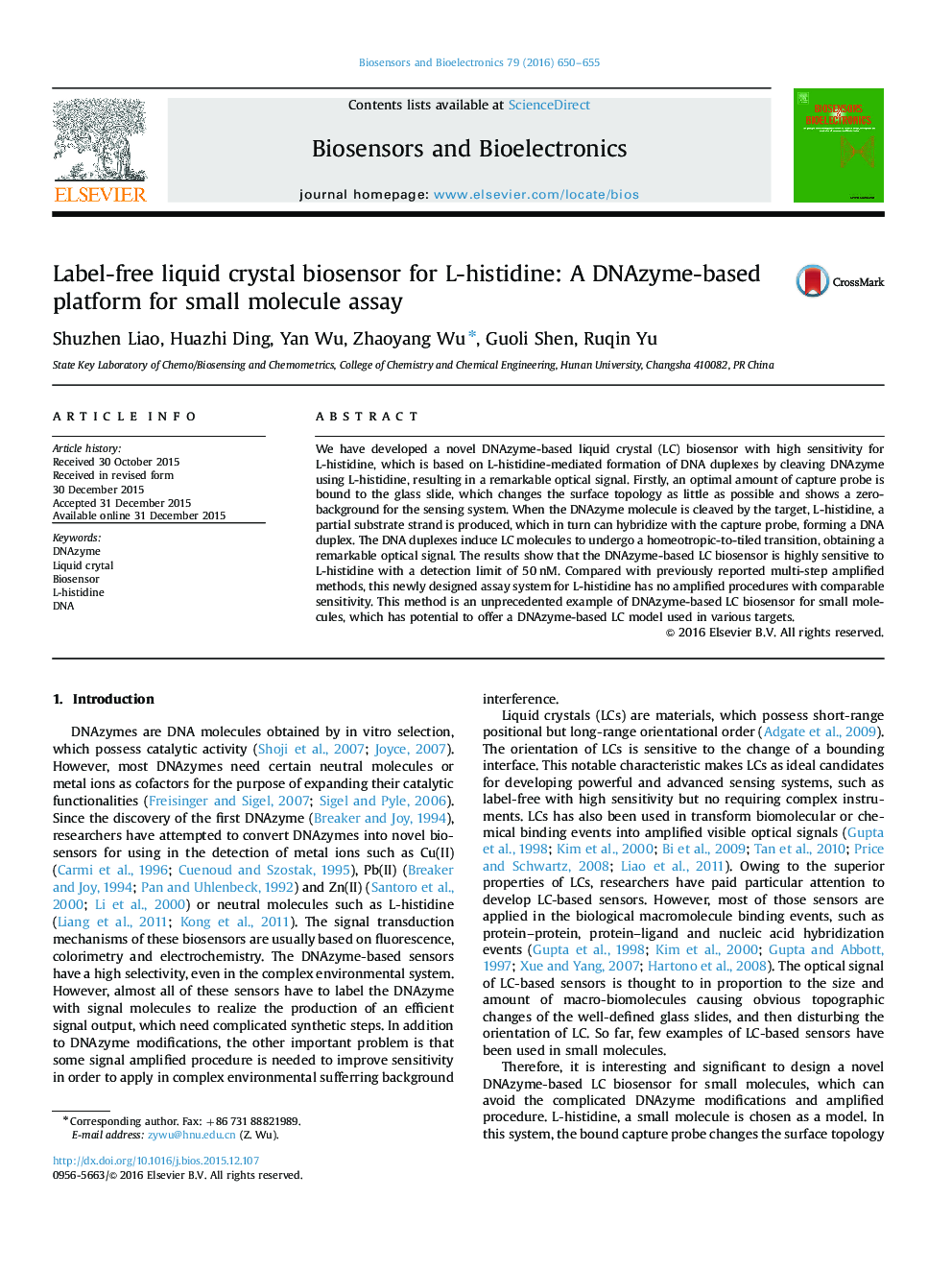| Article ID | Journal | Published Year | Pages | File Type |
|---|---|---|---|---|
| 7231195 | Biosensors and Bioelectronics | 2016 | 6 Pages |
Abstract
We have developed a novel DNAzyme-based liquid crystal (LC) biosensor with high sensitivity for L-histidine, which is based on L-histidine-mediated formation of DNA duplexes by cleaving DNAzyme using L-histidine, resulting in a remarkable optical signal. Firstly, an optimal amount of capture probe is bound to the glass slide, which changes the surface topology as little as possible and shows a zero-background for the sensing system. When the DNAzyme molecule is cleaved by the target, L-histidine, a partial substrate strand is produced, which in turn can hybridize with the capture probe, forming a DNA duplex. The DNA duplexes induce LC molecules to undergo a homeotropic-to-tiled transition, obtaining a remarkable optical signal. The results show that the DNAzyme-based LC biosensor is highly sensitive to L-histidine with a detection limit of 50Â nM. Compared with previously reported multi-step amplified methods, this newly designed assay system for L-histidine has no amplified procedures with comparable sensitivity. This method is an unprecedented example of DNAzyme-based LC biosensor for small molecules, which has potential to offer a DNAzyme-based LC model used in various targets.
Keywords
Related Topics
Physical Sciences and Engineering
Chemistry
Analytical Chemistry
Authors
Shuzhen Liao, Huazhi Ding, Yan Wu, Zhaoyang Wu, Guoli Shen, Ruqin Yu,
